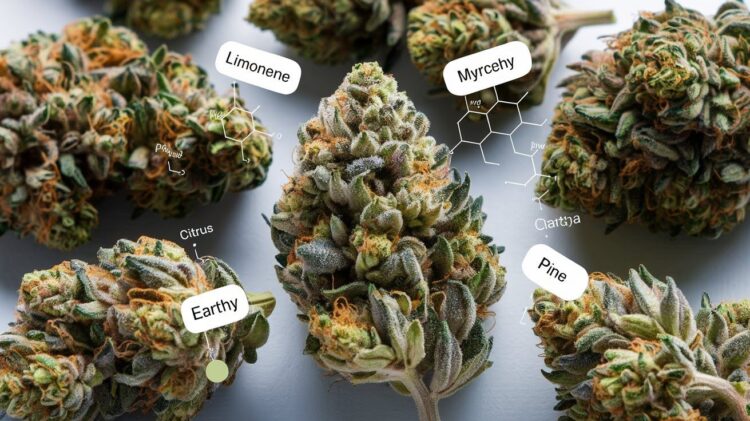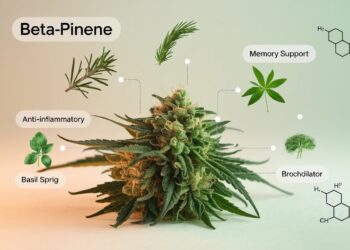When you catch that distinct aroma from cannabis, you’re smelling terpenes, often called “terps” by seasoned users. These natural compounds don’t just make your product smell or taste good. They shape how cannabis affects you, from calming to energizing.
While THC and CBD get most of the spotlight, terpenes are the unsung heroes of the cannabis experience. I’ve spent the past several years studying terpene profiles, testing products with different blends, and talking to cultivators who focus on terpene science. What I’ve learned is simple: if you understand terps, you understand how to shop smarter.
This article breaks it all down in plain English. No jargon. No hype. Just clear, research-backed facts and practical advice. We’ll explain how terpenes affect flavor, mood, and effect, and how to use that info to find strains that match your goals.
By the end, you’ll feel more confident, informed, and in control of your cannabis choices.
Why Terps Matter in Cannabis Culture?
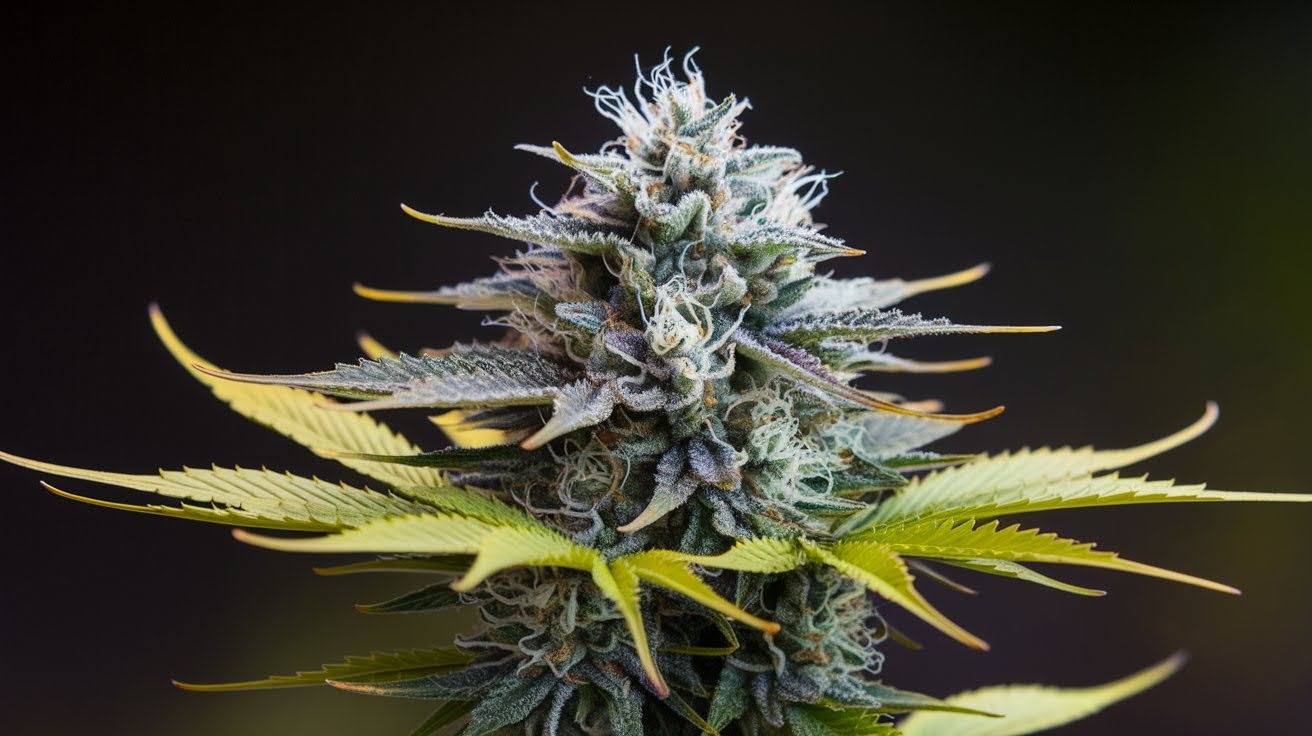
THC percentages used to be everything. Higher numbers meant better weed, right? Wrong. I’ve watched consumers shift their focus. They now ask about terps before checking THC levels. This change makes sense.
You’ve probably noticed two strains with identical THC hit differently. That’s terps at work. They’re the missing piece in understanding why Blue Dream feels different from OG Kush. Here’s what terps do for you:
Personal experience control: Match effects to your mood. Strain selection clarity: know what you’re buying. Effect prediction: Anticipate how you’ll feel.
Smart consumers use terpene profiles like fingerprints. Each strain tells its own story through these compounds.
The Science Behind Cannabis Terpenes
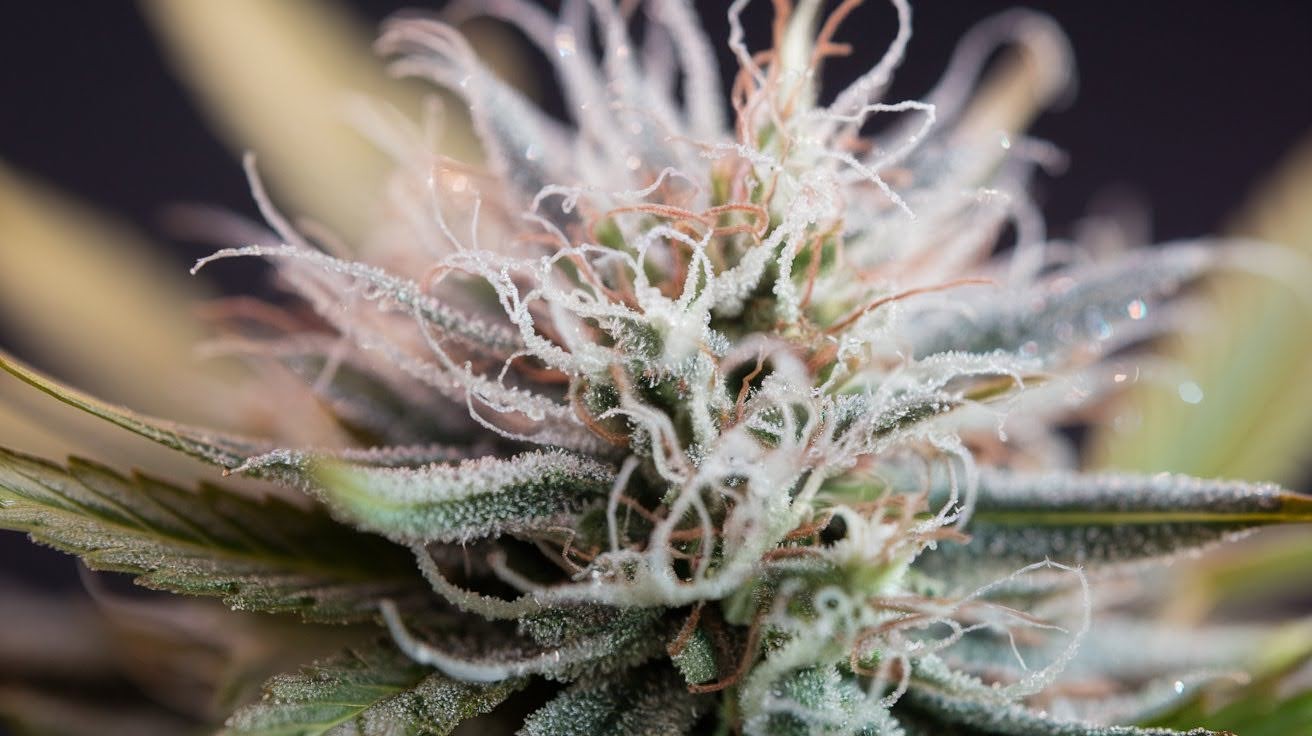
Look closely at quality cannabis buds. See those tiny, crystal-like structures covering the surface? Those are trichomes. I think of trichomes as nature’s chemical factories.
They produce everything that makes cannabis special: THC, CBD, and terps all come from these microscopic powerhouses. Here’s how it works: Trichomes start developing when plants flower. They pump out compounds as protection against insects and UV light, smart evolution in action.
You get the highest terpene levels right before harvest time. Wait too long? The concentrations drop. Harvest too early? You miss peak production. Think of it like picking fruit. There’s a perfect moment when everything aligns.
Why this matters to you: Understanding trichome development helps you recognize quality products. Dense trichome coverage usually means higher terpene content. More terps equal better flavor and effects. Good growers time their harvest perfectly to capture peak terpene production.
Common Cannabis Terpenes and Their Characteristics
Common cannabis terpenes include myrcene (earthy, relaxing), limonene (citrusy, uplifting), pinene (piney, alert), and linalool (floral, calming). Each offers unique effects.
Myrcene
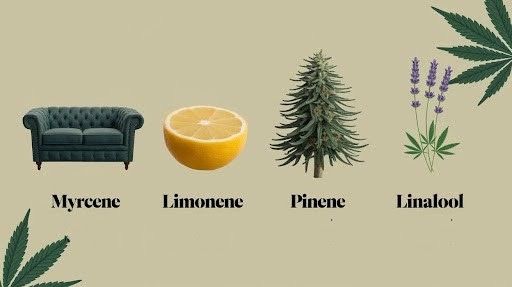
Smell that earthy, musky scent? That’s myrcene talking to you. I notice this terpene in most cannabis strains. It creates deep relaxation and heavy body effects. You know that sinking feeling when you can’t leave the couch? Myrcene causes it.
The aroma hits different: earthy base with clove hints mixed in. Some people smell herbs or even slight sweetness. This terpene dominates cannabis more than any other. Most strains contain significant myrcene levels.
If you want to sleep better or reduce muscle tension, look for myrcene-rich products.
Limonene

Citrus lovers, this one’s for you. Limonene smells like fresh lemon peels and orange zest.
I’ve seen this terpene work magic on bad moods. It lifts your spirits naturally while reducing stress levels.
Your mind feels clearer, more focused. Perfect for daytime use: mental alertness without jitters. You stay productive while feeling positive. Limonene appears in many sativa-leaning strains. Look for citrus-scented products when you need motivation or creativity boosts.
Pinene

Walk through a pine forest. That fresh, sharp scent? Pure pinene. I recommend pinene for mental clarity. It fights THC brain fog while supporting memory function.
You stay sharp and alert. The aroma profile: pine needles mixed with rosemary and forest air. Clean and refreshing.
This terpene appears in herbs and trees naturally. Cannabis with pinene helps you think clearly during consumption.
Linaloolt
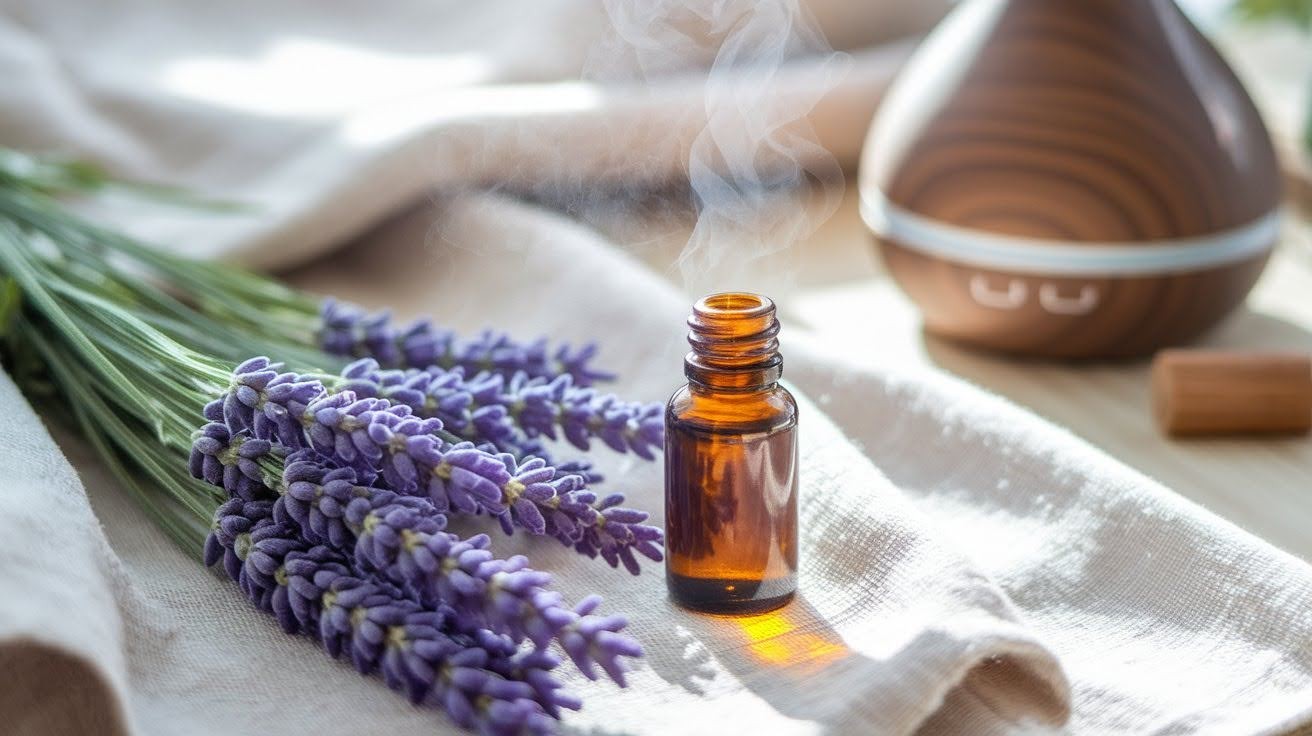
Take a deep breath of lavender. That soothing scent comes from linalool. I use this terpene when anxiety strikes. It naturally calms your nervous system without making you drowsy.
Your muscles relax while your mind stays clear. The smell tells the story: floral lavender with subtle spicy notes. Some people catch hints of mint or citrus, too.
Aromatherapy relies heavily on linalool. Cannabis strains rich in this terpene work similarly to lavender essential oils.
Caryophyllene
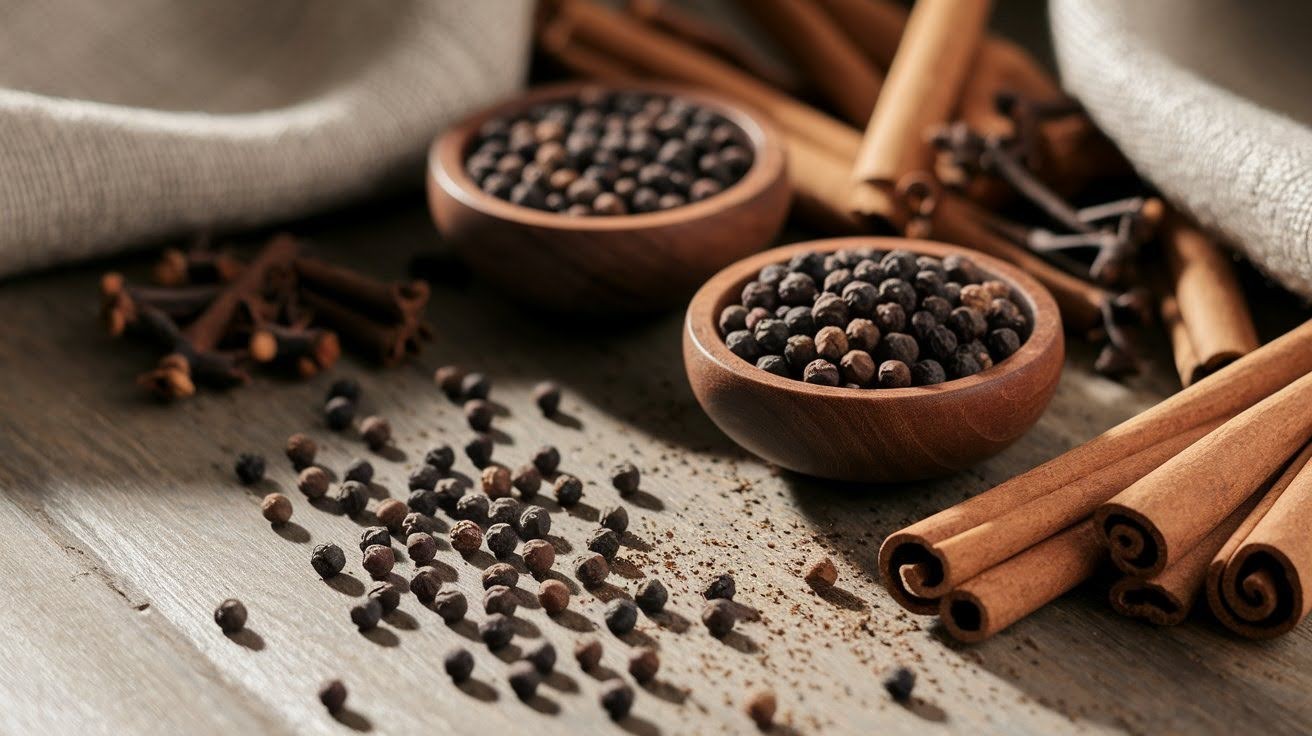
Here’s where things get interesting. Caryophyllene acts like a cannabinoid, not just a terpene. I find this compound fascinating because it directly binds to your CB2 receptors. This means it works differently from other terps.
You get stress relief and physical comfort without psychoactive effects. The aroma hits bold: black pepper mixed with woody spices, sharp and warming at the same time. You’ll find caryophyllene in your spice rack. Black pepper contains high levels of this unique compound.
Additional Notable Terpenes

Terpinolene
This terpene confuses your nose. One moment you smell fruit, the next it’s flowers. I describe terpinolene as nature’s complexity in action. It blends fruity sweetness with herbal freshness and floral notes.
Your brain can’t pin down just one scent. The effects match the aroma: uplifting energy without jitters. You feel motivated and clear-headed.
Humulene
Beer lovers know this smell. Humulene gives hops their distinctive aroma. I notice this terpene creates earthy, woody vibes with subtle bitterness.
Think fresh soil after rain mixed with tree bark. Interesting twist: humulene might reduce appetite instead of increasing it. Opposite of typical cannabis effects.
You’ll find it in sage and ginseng, too.
How Terpenes Influence Cannabis Experience?
Terpenes shape your cannabis experience by affecting aroma, flavor, and effects. They work with cannabinoids to boost relaxation, energy, or focus.
Flavor and Aroma Impact
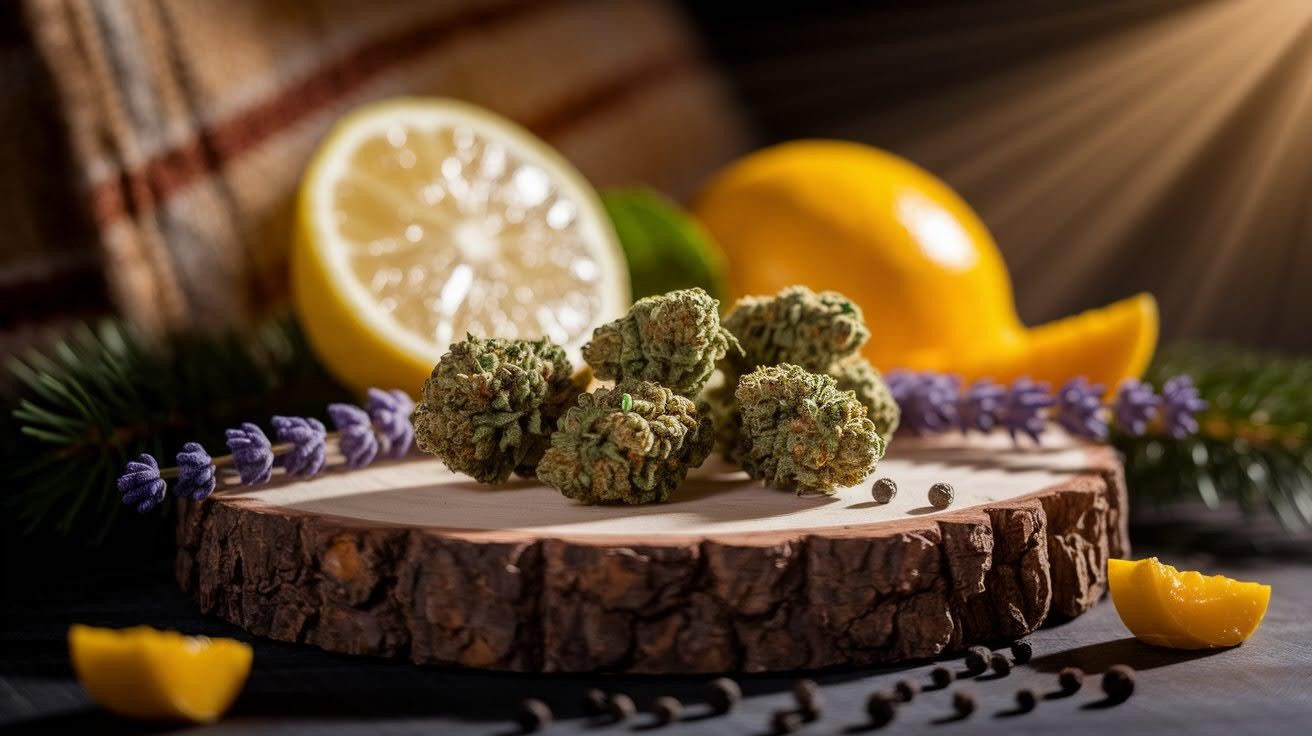
Every strain smells different for a reason. Terpenes create these unique signatures. I think of terps as nature’s flavor artists. They don’t work alone, though. Multiple terpenes blend, creating complex profiles you can’t get from single compounds.
Here’s what happens: your nose detects the terpene mix before you even consume. This sets expectations for taste and effects. The sensory experience goes deeper: terpenes hit your taste buds during consumption. They also influence how cannabinoids affect you.
You can identify strains by smell once you understand terpene profiles. Your preferences develop around specific terpene combinations, not just THC levels. Smart consumers smell first, then decide.
The Entourage Effect Theory
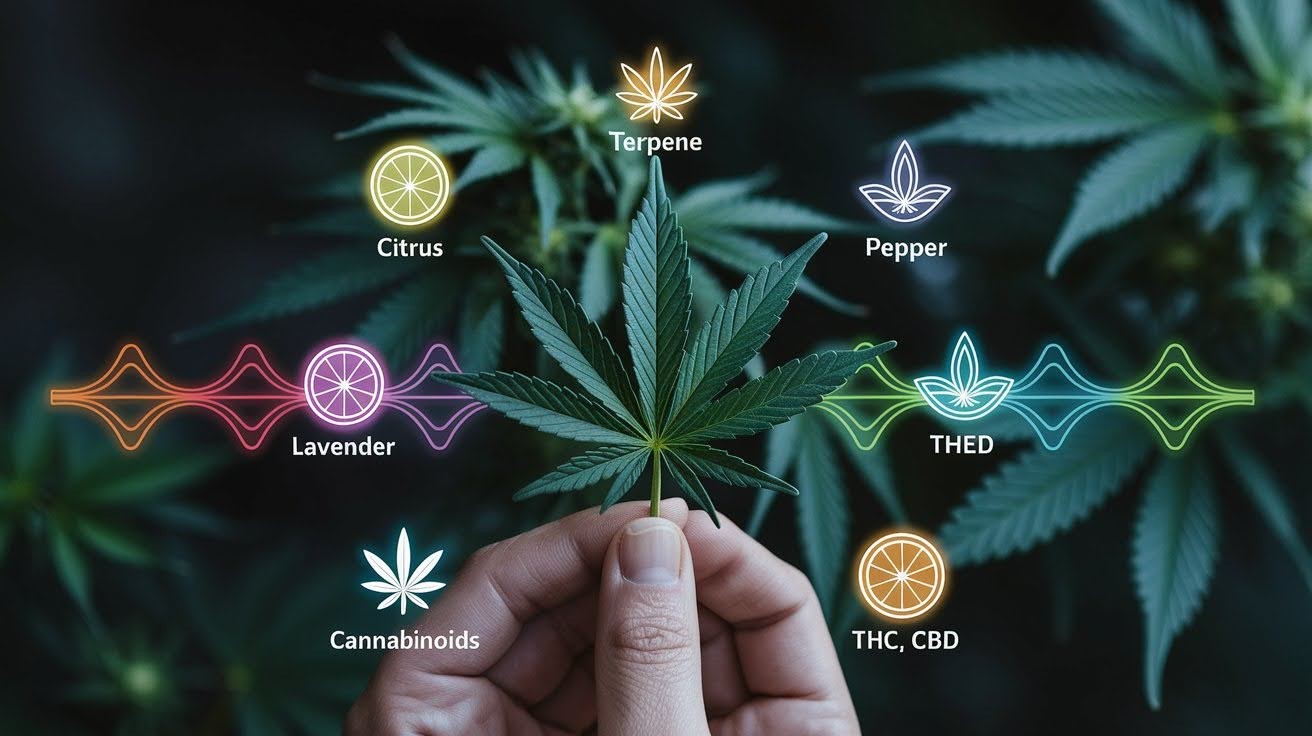
Think of cannabis like a band. Each musician sounds good alone, but together they create magic. I see this happening when terpenes meet cannabinoids. The combined effect beats individual parts.
Your THC hits differently when myrcene joins the party. CBD works better with linalool backing it up. Here’s the theory: terpenes change how cannabinoids affect your brain. They can make THC more relaxing or more energizing.
The whole plant works as a team. Scientists call this the entourage effect. It explains why isolated THC feels different than full-spectrum cannabis.
Two strains, both 20% THC. One puts you to sleep, the other keeps you creative. Why?
I blame the terpenes.
Myrcene-heavy strains cause couch-lock even with identical THC levels. Limonene-rich varieties keep you active and social. The proof is in your experience: same cannabinoid content, completely different effects. Terpene profiles make all the difference.
Effects of Cannabis High

THC doesn’t work alone. Terpenes act like directors, telling THC how to behave in your system. I’ve noticed terpenes change everything about your high. Myrcene makes THC more sedating.
Pinene keeps you alert despite strong THC levels. Limonene adds mental clarity to the mix. Duration shifts too: some terpene combinations extend your high, others make it fade faster.
Here’s the real secret: indica and sativa effects come from terpenes, not plant genetics. Myrcene-heavy strains feel “indica” regardless of plant type. You can customize your experience by choosing specific terpene profiles.
Same THC percentage, totally different ride depending on which terps tag along. Smart consumers pick effects, not just strength.
Health Benefits and Therapeutic Potential
Terpenes offer more than aroma” they may reduce stress, ease pain, fight inflammation, and support mood, making cannabis more therapeutic.
Potential Therapeutic Properties
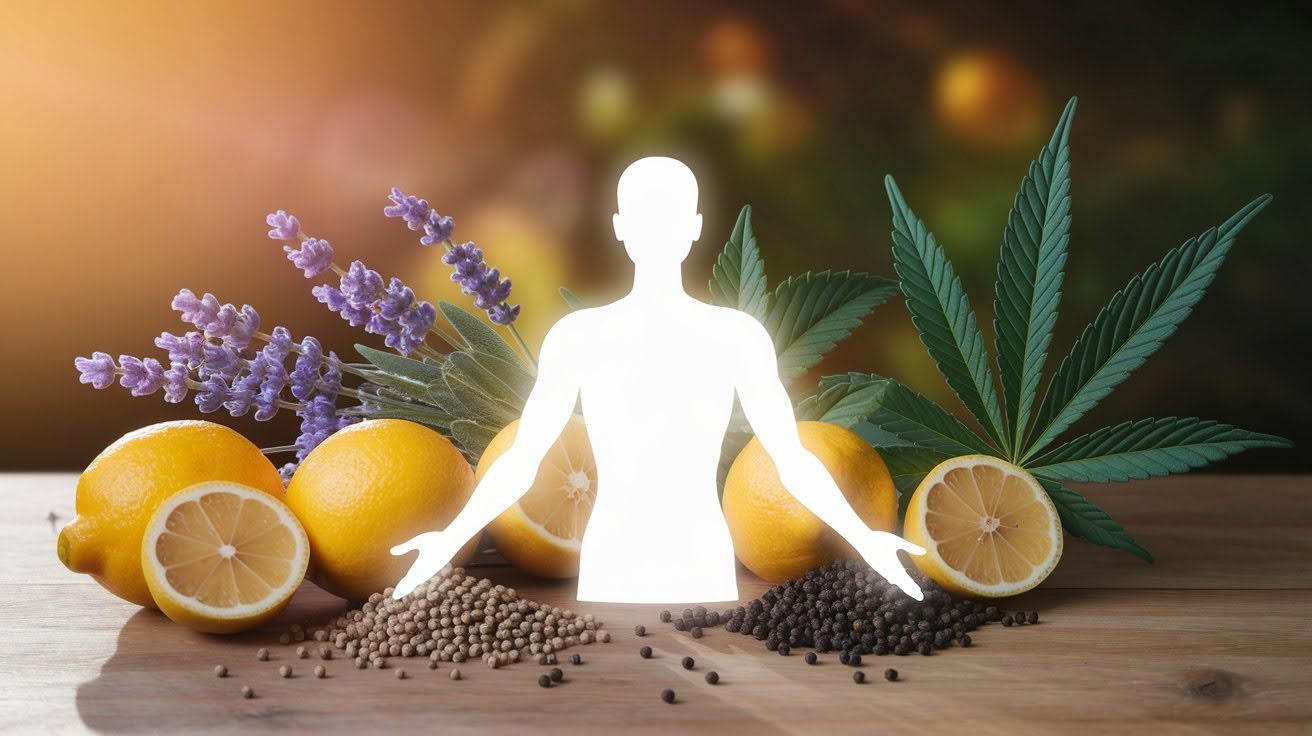
Your nervous system responds to terpenes naturally. I’ve seen how linalool works like nature’s anxiety medication. The science backs this up: linalool binds to receptors that calm your mind. Limonene lifts mood while reducing stress hormones.
Both work without the side effects common in prescription drugs. Many people use these terpenes for daily stress management. They provide gentle relief without making you drowsy or disconnected.
Caryophyllene stands apart from other terpenes. It directly activates your endocannabinoid system like THC does. I find this fascinating because caryophyllene works on inflammation naturally. Your CB2 receptors respond to it, potentially reducing physical discomfort.
Myrcene adds muscle relaxation to the mix. Sleep becomes easier when myrcene-rich strains help your body wind down. Natural relaxation beats counting sheep every time.
Understanding the Research
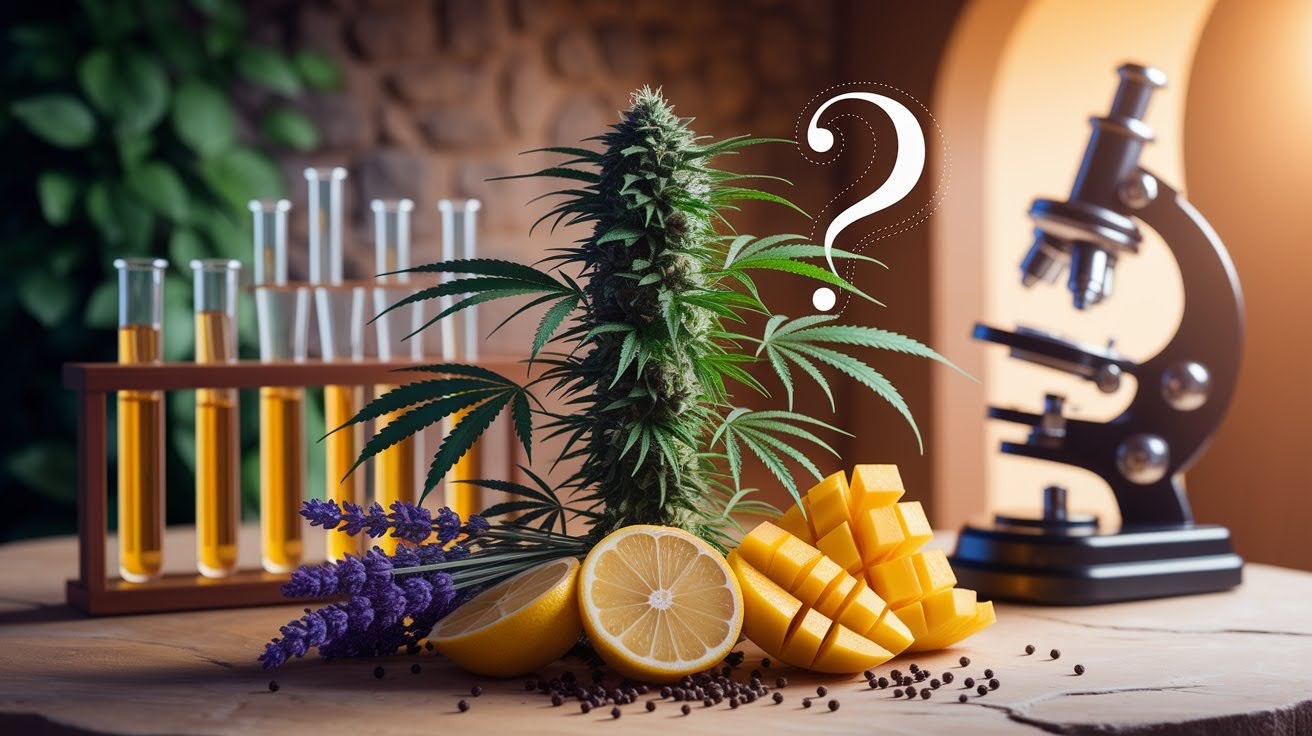
Hold your excitement. Most terpene studies happen in labs, not real-world situations. I want you to know the truth: research is still early-stage. What works in test tubes might work differently in your body.
Scientists need more human studies before making big claims. Think of terpenes as supportive tools, not miracle cures. They can help with wellness goals alongside healthy habits. Don’t expect them to solve major health problems alone.
Realistic expectations matter. Terpenes enhance your cannabis experience and may provide gentle therapeutic benefits. They’re not pharmaceutical replacements but valuable natural compounds worth understanding. Work with healthcare providers for serious health concerns.
Practical Guide for Cannabis Users
Understanding terpenes helps users choose better strains. Learn how to read labels, trust your nose, and match effects to needs.
Reading Terpene Profiles
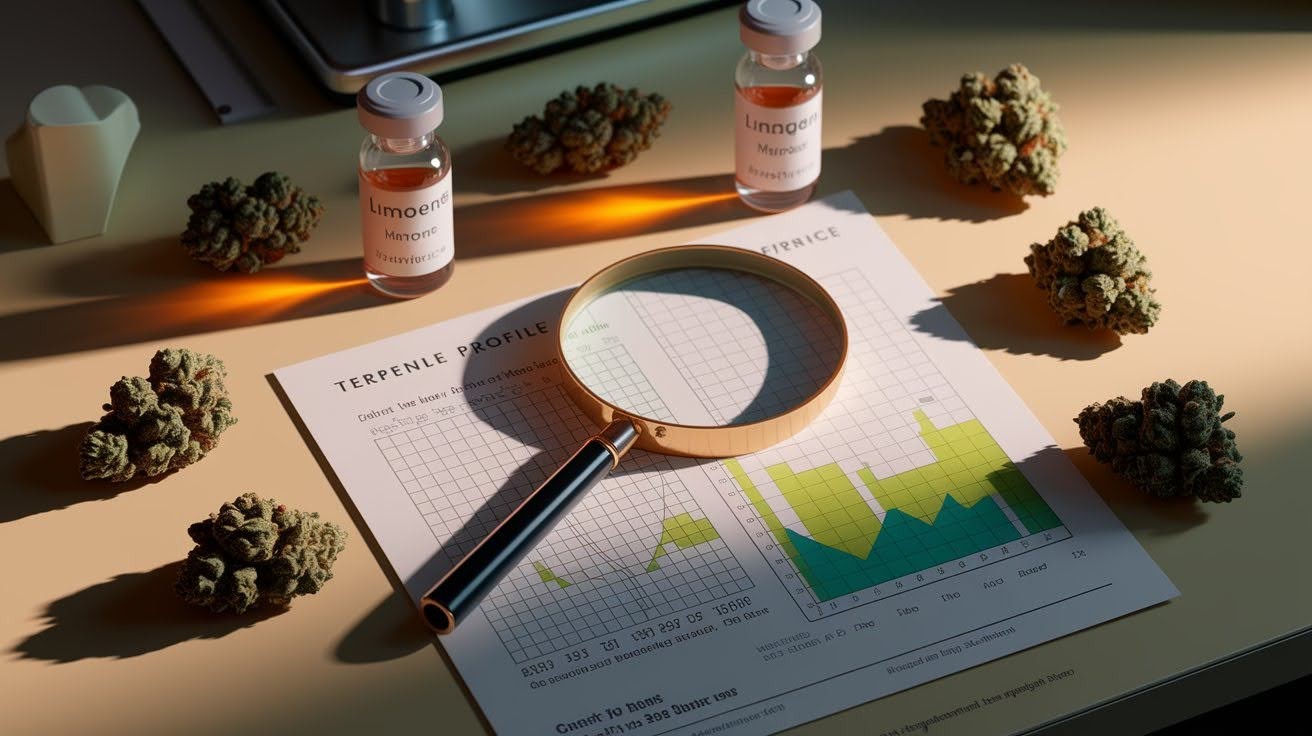
Those lab sheets look confusing at first. I’ll make them simple for you. Look for terpene percentages around 2% total content. Higher numbers mean stronger effects and flavors.
The top three terpenes listed create the main experience. Here’s what matters: dominant terpenes shape your high more than minor ones. If myrcene leads at 1.2%, expect relaxation.
Limonene on top means energy and a mood boost. Use these profiles like a roadmap for strain selection based on desired effects.
Getting the Most from Terpenes
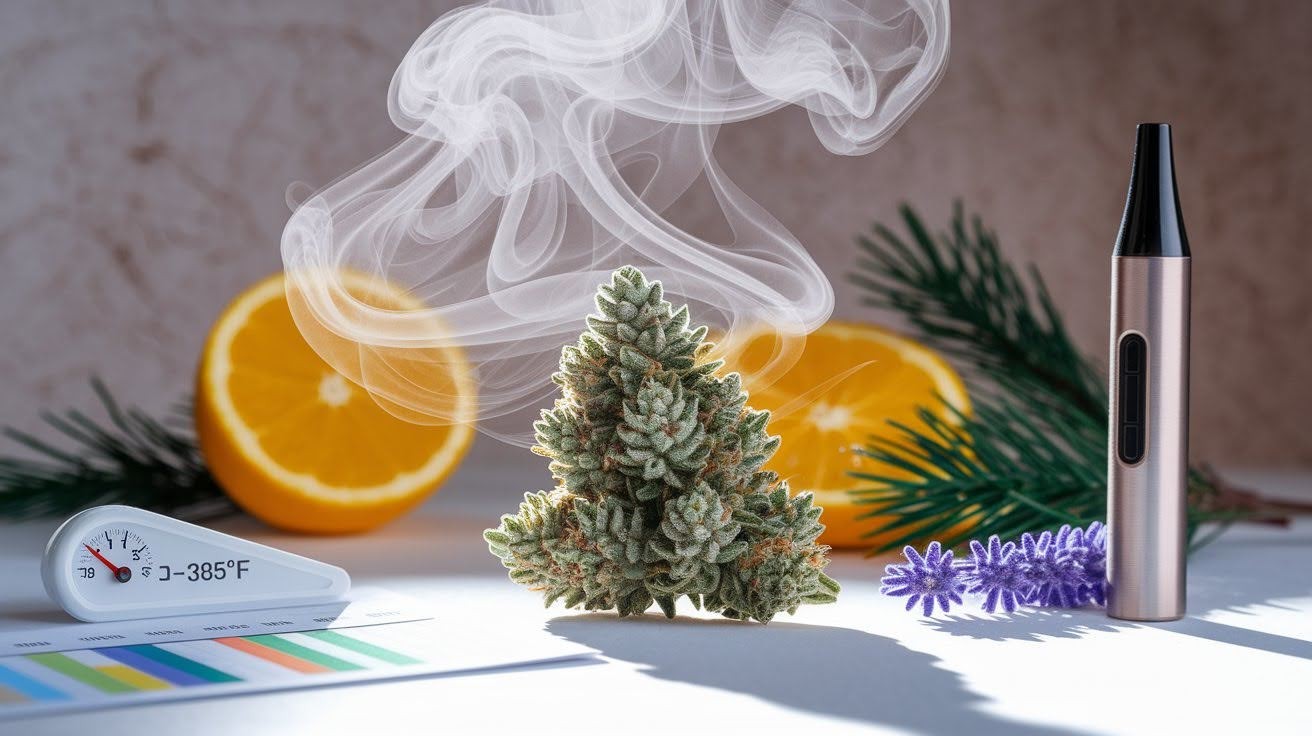
Lab testing isn’t optional. I only buy products with recent test results showing terpene breakdowns. Check package dates carefully. Fresh cannabis retains more terpenes than old, dried-out flowers.
Your nose knows quality” good cannabis smells strong and complex. Visual cues help too: frosty trichomes indicate high terpene content. The dull, brown flower has lost its potency.
Heat destroys terpenes fast. Vaporizing at lower temperatures preserves these delicate compounds better than smoking. I recommend temperatures between 315-385°F for maximum terpene preservation.
You’ll taste more flavors and feel cleaner effects. The difference is obvious: vaporized cannabis delivers fuller terpene profiles than combusted flowers.
Conclusion
Now you understand terps’ meaning in cannabis goes far beyond smell. These natural compounds control your entire experience, from flavor and effects to therapeutic benefits. You’ve learned how myrcene creates relaxation, limonene boosts mood, and pinene sharpens focus.
The science behind terpene-cannabinoid interaction explains why identical THC levels produce different highs. Your cannabis shopping just got smarter. Look for lab-tested products with detailed terpene profiles.
Choose strains based on desired effects, not just THC percentages. Use proper consumption methods to preserve these valuable compounds. You’re no longer guessing at strain effects. Terpene knowledge puts you in control of your cannabis experience.
What’s your favorite terpene combination? Share your experiences in the comments below” your insights help other readers make better choices, too.
Frequently Asked Questions
What does terps mean in cannabis?
Terps refer to terpenes, natural aromatic compounds in cannabis that create smell, flavor, and influence effects alongside THC and CBD.
How do terps affect the cannabis high?
Terps modify THC’s effects through the entourage effect. Myrcene causes relaxation, limonene provides energy, and pinene maintains mental clarity during consumption.
Can you taste terps in cannabis products?
Yes, terps create distinct flavors. Limonene tastes citrusy, myrcene is earthy, and pinene has pine-like flavors. Vaporizing preserves the terpene taste better than smoking.
Do terps have health benefits?
Early research suggests terps may help with stress, sleep, and inflammation. However, studies are limited, and terps work as supportive wellness tools, not medical treatments.
How do I find terpene information for cannabis strains?
Check lab test results on product packaging. Look for terpene profiles showing percentages and dominant compounds. Quality dispensaries provide detailed terpene breakdowns for informed purchasing.

